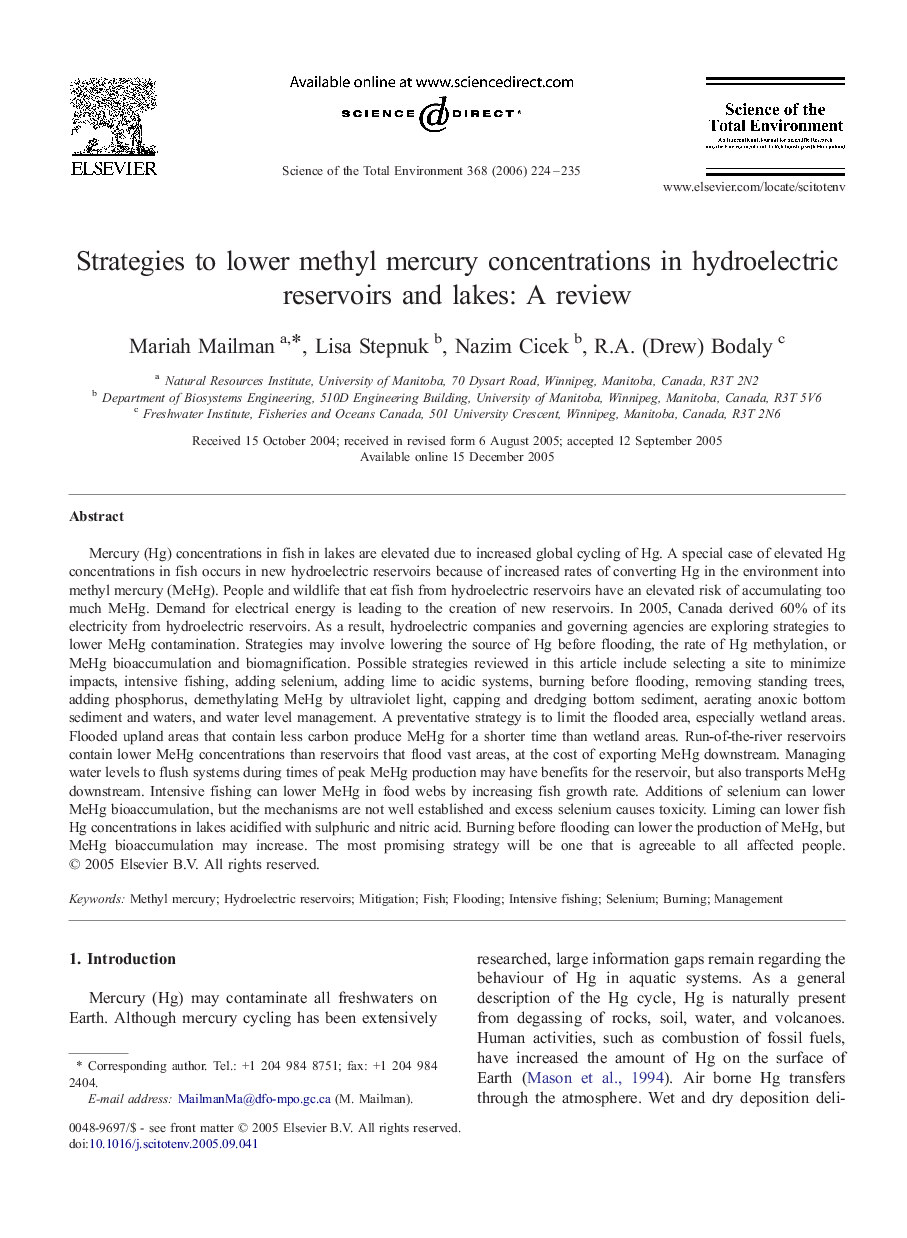| کد مقاله | کد نشریه | سال انتشار | مقاله انگلیسی | نسخه تمام متن |
|---|---|---|---|---|
| 4434073 | 1619968 | 2006 | 12 صفحه PDF | دانلود رایگان |

Mercury (Hg) concentrations in fish in lakes are elevated due to increased global cycling of Hg. A special case of elevated Hg concentrations in fish occurs in new hydroelectric reservoirs because of increased rates of converting Hg in the environment into methyl mercury (MeHg). People and wildlife that eat fish from hydroelectric reservoirs have an elevated risk of accumulating too much MeHg. Demand for electrical energy is leading to the creation of new reservoirs. In 2005, Canada derived 60% of its electricity from hydroelectric reservoirs. As a result, hydroelectric companies and governing agencies are exploring strategies to lower MeHg contamination. Strategies may involve lowering the source of Hg before flooding, the rate of Hg methylation, or MeHg bioaccumulation and biomagnification. Possible strategies reviewed in this article include selecting a site to minimize impacts, intensive fishing, adding selenium, adding lime to acidic systems, burning before flooding, removing standing trees, adding phosphorus, demethylating MeHg by ultraviolet light, capping and dredging bottom sediment, aerating anoxic bottom sediment and waters, and water level management. A preventative strategy is to limit the flooded area, especially wetland areas. Flooded upland areas that contain less carbon produce MeHg for a shorter time than wetland areas. Run-of-the-river reservoirs contain lower MeHg concentrations than reservoirs that flood vast areas, at the cost of exporting MeHg downstream. Managing water levels to flush systems during times of peak MeHg production may have benefits for the reservoir, but also transports MeHg downstream. Intensive fishing can lower MeHg in food webs by increasing fish growth rate. Additions of selenium can lower MeHg bioaccumulation, but the mechanisms are not well established and excess selenium causes toxicity. Liming can lower fish Hg concentrations in lakes acidified with sulphuric and nitric acid. Burning before flooding can lower the production of MeHg, but MeHg bioaccumulation may increase. The most promising strategy will be one that is agreeable to all affected people.
Journal: Science of The Total Environment - Volume 368, Issue 1, 1 September 2006, Pages 224–235